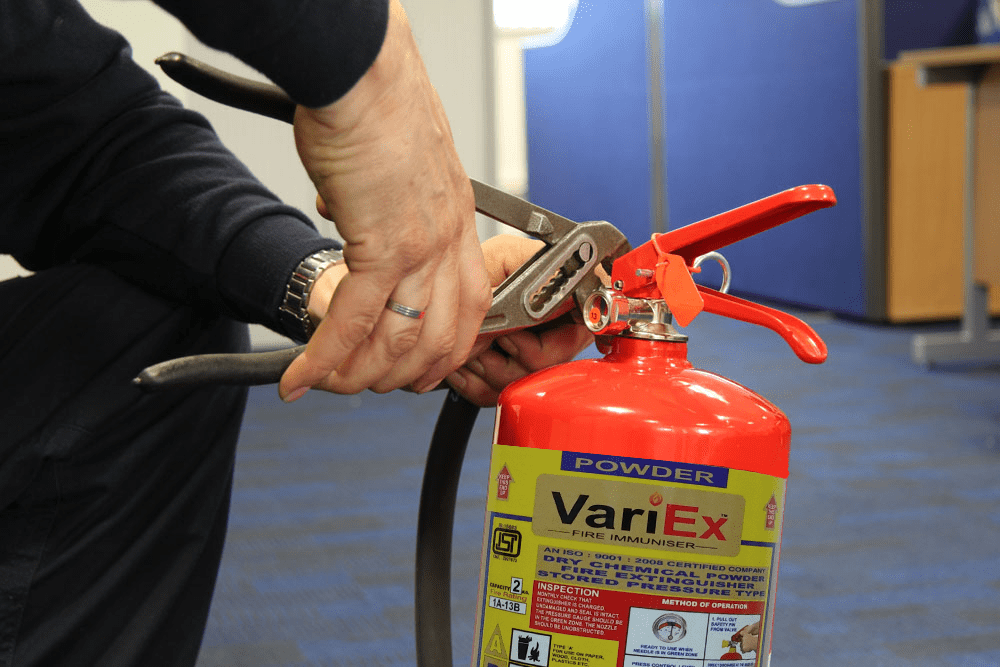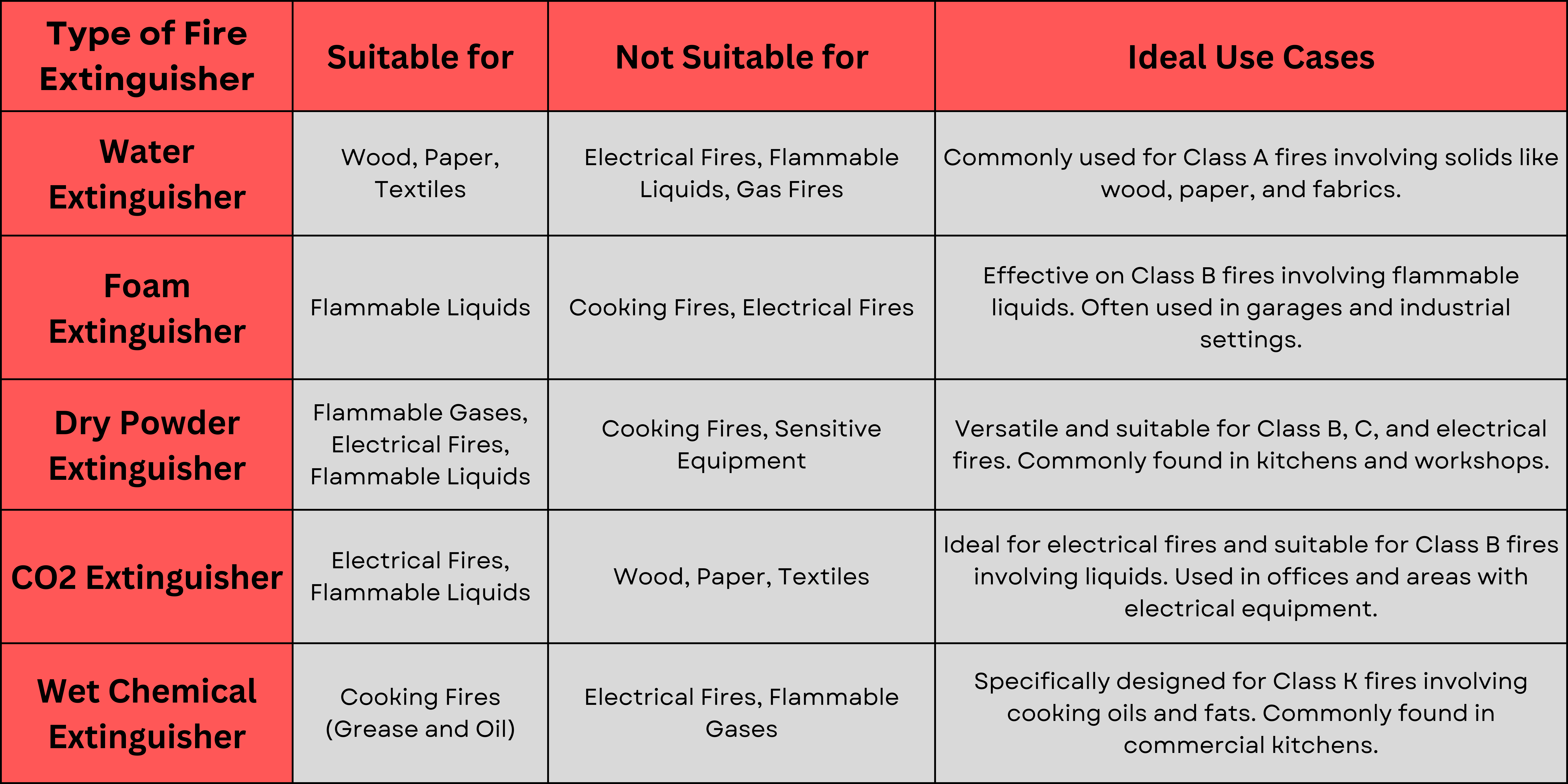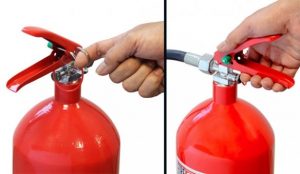![]()
Fire Immuniser
+91-7829629111
Email: info@variex.in
Varistor Technologies Pvt. Ltd.
Block-1, First Floor, Ardente Office One, Hoodi Circle, ITPL Main Road, Bengaluru, Karnataka 560048, IN
How many times can a fire extinguisher be recharged?
Have you ever wondered, 'How many times can a fire extinguisher be recharged?' It's a question that often crosses our minds as we strive to ensure the safety of our surroundings. Fire extinguishers play a crucial role in emergency situations, but the idea of recharging them might seem mysterious. In this exploration, we'll unravel the mystery and delve into the world of fire extinguisher maintenance. Join us as we demystify the process, shedding light on the practicality and limitations of recharging these life-saving devices.
Understanding Fire Extinguisher Basics
Fire safety is a topic that everyone should take seriously, and having a basic understanding of fire extinguishers can make a significant difference in protecting yourself and your loved ones. In this blog post, we'll break down the fundamentals of fire extinguishers in simple terms, empowering you with the knowledge you need to respond confidently in case of an emergency.
Understanding the Fire Triangle: To comprehend how fire extinguishers work, it's essential to know about the "fire triangle." Fires require three elements to thrive: heat, fuel, and oxygen. Remove any one of these elements, and the fire is extinguished. Fire extinguishers are designed to disrupt this triangle effectively.
Types of Fires: Before delving into fire extinguishers, it's crucial to recognize the different classes of fires:
- Class A: Involves ordinary combustibles like wood, paper, and cloth.
- Class B: Involves flammable liquids such as gasoline, oil, and grease.
- Class C: Involves electrical fires.
- Class D: Involves combustible metals.
- Class K: Involves cooking oils and fats.
Now, let's explore the common types of fire extinguishers and their uses:
Water Extinguishers (Class A):
- Suitable for fires involving ordinary combustibles.
- Not to be used on electrical or flammable liquid fires.
Dry Chemical Extinguishers (ABC or BC):
- Effective on Class A, B, and C fires.
- ABC extinguishers are versatile and widely used.
Carbon Dioxide (CO2) Extinguishers (Class B and C):
- Ideal for electrical and flammable liquid fires.
- Leaves no residue, making it suitable for sensitive equipment.
Foam Extinguishers (Class A and B):
- Effective on ordinary combustibles and flammable liquids.
- Forms a blanket to smother the fire.
Wet Chemical Extinguishers (Class K):
- Designed for kitchen fires involving cooking oils and fats.
- Emulsifies the fats to prevent re-ignition.
Using a Fire Extinguisher:
1. P.A.S.S. Technique:
- Pull the pin.
- Aim the nozzle at the base of the fire.
- Squeeze the handle to discharge the extinguishing agent.
- Sweep from side to side until the fire is out.
2. Know Your Escape Route:
- Always position yourself with an exit at your back.
- If the fire becomes uncontrollable, evacuate immediately and call for help.
The Recharging Process
Understanding the Need for Recharging: After a fire extinguisher has been used, it becomes depressurized, and the extinguishing agent is depleted. Even if only a small amount of the agent was used, the pressure can be affected, compromising the device's ability to deliver the necessary force to combat a fire. Additionally, some fire extinguishers have gauges that indicate whether they are fully charged, making it easier to determine when a recharge is needed.
The Recharging Process:
- Inspection: Before recharging, the extinguisher must undergo a thorough inspection. Check for any physical damage, corrosion, or leakage. Ensure that all parts, including the hose and nozzle, are in good condition.
- Release of Pressure: The remaining pressure in the extinguisher is released to ensure a safe and effective recharge process. This step is crucial in preventing accidents during the recharging procedure.
- Disassembly: The extinguisher is carefully disassembled, and the internal components are inspected for any signs of wear or damage. If any parts are found to be faulty, they are replaced during this stage.
- Refilling the Extinguishing Agent: The appropriate extinguishing agent, as specified for the type of fire extinguisher, is refilled to the recommended level. This process requires precision to ensure the extinguisher is properly charged for effective use.
- Pressurization: The extinguisher is pressurized to the recommended level, typically using nitrogen or carbon dioxide, depending on the type of extinguisher. This step ensures that the device is ready to deliver the extinguishing agent with the necessary force.
- Sealing and Testing: The extinguisher is sealed to prevent any leakage, and a final inspection and functionality test are conducted to ensure that all components are in proper working order.
Understanding Its Limits and Signs of Replacement
While fire extinguishers are crucial tools for tackling small fires, it's essential to recognize their limitations and factors that affect their rechargeability. In this discussion, we'll delve into considerations that impact the effectiveness of fire extinguishers, as well as signs that may indicate it's time for a replacement.
Understanding Limitations: Fire extinguishers come with specific limitations based on their design and the type of fires they are intended to combat. For instance, a fire extinguisher designed for flammable liquids might not be suitable for electrical fires. It's crucial to know the classification of your extinguisher and its recommended use to avoid using it inappropriately.
Factors Affecting Rechargeability:
- Physical Damage: External damage, such as dents, corrosion, or broken parts, can compromise the integrity of the extinguisher and affect its rechargeability.
- Expiry Date: Fire extinguishers have a designated lifespan. Check the expiration date, and if it has passed, the extinguisher may need replacement rather than just a recharge.
- Pressure Loss: If there's a noticeable loss of pressure, the extinguisher may not deliver the extinguishing agent effectively. This could be due to leakage or other internal issues.
- Gauge Readings: Some extinguishers have pressure gauges. If the needle is not in the green zone, it may indicate that the extinguisher needs attention, either a recharge or replacement.
Signs a Fire Extinguisher May Need Replacement:
- Visible Damage: Any visible damage, such as dents, rust, or a broken nozzle, may compromise the extinguisher's effectiveness. If you notice such damage, consider replacing the unit.
- Excessive Corrosion: Corrosion on the exterior or interior of the extinguisher can weaken the structure and render it unreliable. If corrosion is extensive, replacement is often the best course of action.
- Outdated Extinguisher: If your extinguisher is past its expiration date, it's time to replace it. Manufacturers provide an expiration date to ensure the reliability of the extinguisher's components.
- Pressure Issues: If the extinguisher feels lighter than usual or the pressure gauge indicates a loss of pressure, it may be a sign that the unit is no longer reliable and should be replaced.
Regulations and Standards
When it comes to maintaining the effectiveness of fire extinguishers, adhering to regulations and standards during the refilling process is paramount. Ensuring that a fire extinguisher is recharged in compliance with industry guidelines not only guarantees its reliability but also contributes to overall fire safety. In this discussion, we'll explore the importance of following regulations and standards when refilling fire extinguishers.
Regulatory Compliance: Recharging a fire extinguisher is not a casual process; it involves a series of steps governed by strict regulations and standards. These guidelines are in place to uphold the safety and functionality of these essential firefighting tools. Failing to adhere to these regulations can compromise the extinguisher's performance, rendering it ineffective in an emergency.
Industry-Specific Standards: Various industries have specific standards governing the refilling of fire extinguishers. These standards dictate everything from the type of extinguishing agent used to the pressure levels within the device. Compliance with these standards ensures uniformity and consistency in fire safety measures across different sectors.
Certification Requirements: Professionals engaged in the business of refilling fire extinguishers are often required to have specific certifications. These certifications validate their competence in handling extinguishing agents, pressurization techniques, and overall knowledge of the refilling process. Hiring certified technicians ensures that the recharge is performed by individuals with the necessary expertise.
Periodic Inspections and Testing: Regulations also mandate regular inspections and testing of fire extinguishers. This includes evaluating the condition of the extinguisher, assessing the pressure levels, and confirming the proper functioning of internal components. These inspections help identify potential issues before they compromise the extinguisher's ability to respond effectively to a fire.
Environmental Considerations: In addition to safety concerns, regulations also address environmental considerations related to the disposal of extinguishing agents and the materials used in the refilling process. Adhering to environmentally friendly practices minimizes the impact of fire extinguisher maintenance on the ecosystem.
Practical Tips for Using Fire Extinguishers
Fire extinguishers are valuable tools in ensuring our safety, but knowing how to use them properly is key. In this discussion, we'll cover some practical tips to help you confidently handle a fire extinguisher in case of an emergency, making sure you stay safe and protect what matters most.
Understanding the Basics: Before diving into tips, it's essential to grasp the basics. Fire extinguishers come in different types designed for specific fire classes. Class A for ordinary combustibles, Class B for flammable liquids, Class C for electrical fires, and so on. Knowing the type of extinguisher you have and its intended use is the first step.
Quick Action Matters: In the event of a small fire, immediate action is crucial. Grab the fire extinguisher, pull the pin, aim the nozzle at the base of the fire, squeeze the handle, and sweep from side to side. This simple acronym, P.A.S.S., can help you remember the steps and act swiftly.
Safety First: Always prioritize your safety. Position yourself with an exit at your back, so if the fire becomes uncontrollable, you can evacuate easily. Don't let the fire come between you and your exit route.
Know Your Limits: Fire extinguishers have limitations. They are effective for small fires in their early stages. If the fire is too large or spreading rapidly, it's time to evacuate and call for professional help. Don't risk your safety trying to tackle a fire that is beyond the capacity of your extinguisher.
Regular Checks: Periodically inspect your fire extinguisher to ensure it's in good working condition. Check for visible damage, ensure the pressure gauge is in the green zone, and confirm that all parts are intact. If you notice any issues, address them promptly.
Understand Extinguisher Classes: Know the types of fires your extinguisher can handle. Using the wrong type on a fire can make matters worse. For instance, using water on an electrical fire can lead to electric shock. Be familiar with the fire classes and use the appropriate extinguisher accordingly.
Stay Calm: In the event of a fire, it's natural to feel anxious, but try to stay calm. Panic can hinder your ability to use the fire extinguisher effectively. Take a deep breath, remember the basics, and act methodically.
In conclusion, understanding the rechargeability of fire extinguishers is pivotal for ensuring the effectiveness of these crucial safety devices. We've unraveled the intricacies of the recharging process, explored its limitations, and delved into the associated regulations and standards. As we navigate the landscape of fire safety, it becomes evident that regular maintenance, adherence to industry guidelines, and a keen awareness of signs requiring attention are essential. Whether considering DIY approaches or relying on professional services, the commitment to keeping fire extinguishers in optimal condition contributes significantly to a safer environment. Ultimately, the quest for knowledge surrounding fire extinguisher rechargeability empowers individuals to play an active role in safeguarding lives and property.
Frequently Asked Questions (FAQs)
1.How many times can a fire extinguisher be recharged?
The number of recharge cycles varies depending on the type and condition of the fire extinguisher. Generally, they can be recharged multiple times, but it's crucial to follow manufacturer guidelines.
2. When should a fire extinguisher be recharged?
Recharge your fire extinguisher immediately after any use, regardless of how much was discharged. Additionally, routine maintenance and inspections should identify the need for recharging.
3. Can I recharge a fire extinguisher at home?
While there are recharge kits available, it is recommended to have fire extinguishers professionally recharged. DIY attempts may not guarantee proper pressurization and effectiveness.
4. Are there regulations regarding fire extinguisher rechargeability?
Yes, various industry standards and local regulations govern fire extinguisher maintenance and recharge procedures. Familiarize yourself with these guidelines to ensure compliance.
5. What factors affect the rechargeability of a fire extinguisher?
Environmental conditions, age, and the type of extinguisher impact rechargeability. Regular inspections can help identify signs of wear or damage that may affect the recharge process.
Final Say
We at VariEx.in or Variexonline.com have mastered the art of designing, installing, inspecting, and fixing automatic sprinkler systems with the help of our in-house team, which is capable of delivering the fire sprinkler services you need, whether large or small and at affordable cost.
To schedule a fire sprinkler installation, or you think our services could benefit your commercial property, contact us online or give us a call at, 7829629111












